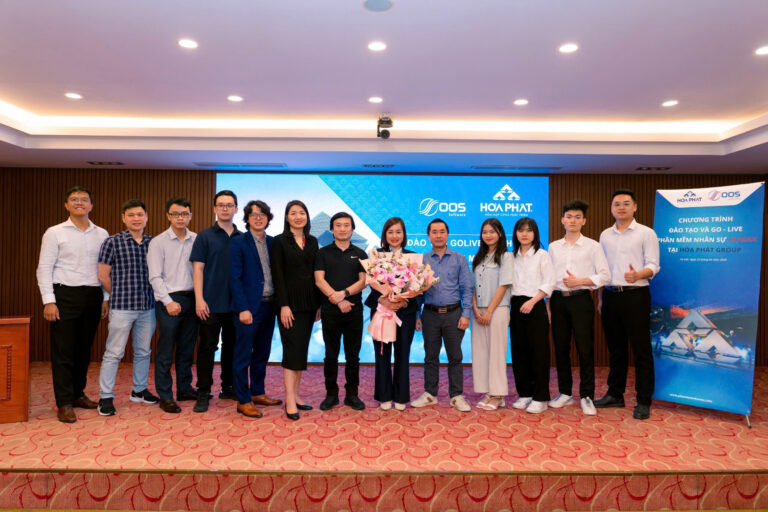72% enterprises chose to cut entry-level personnel, of which 51% chose to cut inexperienced employees, 21% chose the Intern / New Graduate group. Nearly 42% businesses choosing to revive their recruitment plans will prioritize hiring experienced employees, only 19% choose less experienced employees and 5% choose interns/new graduates.
HR Reports, Dashboards “COVID-19 and the Vietnamese labor market: The challenge to the new normal” by Navigos Group
Faced with that situation, in order to take the initiative for the business and keep the operations running smoothly, building the next team is a necessary activity that should be paid attention and invested in. So what is the plan for the next team specifically? Why plan for succession?
What is the next team building plan?
Succession planning is a means of helping “identify key positions, starting with project manager, divisional manager and extending to the highest ranks of the organization. ”
Although often confused with a succession plan, succession planning is actually broader in meaning and can extend down to other positions on the org chart that managers might want to target. is not just about planning a replacement for senior management as many people think.
In the succession plan, usually the current personnel structure will be kept the same. But having a "talented group" will create flexibility for restructuring activities, if any, while ensuring that human resources are not affected.
Succession team building plans focus on developing employees from within, so the organization needs to focus more time and resources on planned training, on-the-job training, and measures. other to develop working capacity.
Why is succession planning important?
Planning for the next team is an important factor to ensure that all activities in the business are always running smoothly, ensuring the completeness of people and working positions in the apparatus. , especially key talents. This not only helps businesses get better internal resources, but also helps reduce the burden on the shoulders of leadership positions.
A “talent pool” is defined below each level and the main aim is to prepare as many successors as possible who can reach 80% ready for promotion to any position at a higher level. in the organization chart. 20% remaining development requirements will be added after candidates have assumed higher responsibility. Planning for the next team helps businesses not be pushed into a passive position when there is any change in personnel, especially in the context of the epidemic with high turnover rate.
When to start planning for the next team?
The beginning of succession planning should be done early to help your organization take the initiative in leadership, give the business a break to adapt and also give Selected employees have personal time so that they can develop themselves and exchange skills that are lacking. Since then, they have had success in their work. These are the benefits of early succession planning.
Steps in the succession planning process
Every good succession plan is designed around a roadmap that integrates all the elements involved and emphasizes employee growth.
Check out the workforce
In order to have an effective and reasonable succession plan, you must first review your workforce to grasp the current situation in your team, find vacancies, are need replacement. Then proceed to find suitable candidates for training. This is an important first step to take in the succession planning process.
To prepare the succession team, management needs to know what to do, how to do it, and which group of people do it best. This step requires regular updating of job descriptions, expected outcomes, accountability, and competency models that represent the qualities needed to do the job best.
Evaluate candidates and select suitable replacements
Candidate evaluation is a necessary process to know if the selected candidates meet the requirements of the position to be replaced. Performance management, the process of planning, managing and evaluating employee performance over time. This is an important step in succession planning, as candidates must be held accountable for the work they do, the responsibilities they carry, and the competencies they display.
It should be emphasized that a performance management system alone is not enough, this system must evaluate employees based on expectations, desired work results as well as the capacity and behavior they must demonstrate. .
Assessing potential to ensure personal growth must keep pace with the business environment. Leaders need to look for objective methods to determine how effective candidates will be in the future when they are in a position of greater responsibility than they are now.
Training and developing selected candidates
When the selected candidate has met the criteria of skills, capacity and potential for development, training the selected candidate is a necessary process to help them take the initiative and easily accept the position. new ideas quickly and efficiently.
The organization's leadership must establish a personal development plan for each employee to bridge the gap between the current job and what the employee must successfully accomplish in the future in order to take on an important role. higher responsibility. The details of this plan will be developed by the employees themselves and by direct management on an annual basis. Individuals are encouraged to consider and plan to use existing resources to develop the necessary competencies for higher positions.
Organizational leaders need to ensure that internal job information systems can encourage people to apply for higher positions, taking into account any factors that hinder the search for a promotion. up. Another prospective approach is to build a top-down succession team, meaning managers identify suitable future leaders, with career planning in which candidates divide share their career goals.
Humax – human resource management software is an effective tool for leaders to help build succession plans:
- Build a clear organizational chart by working location, department, and department, easily grasp the business structure.
- Human resource allocation, location planning helps to analyze current jobs and human resources, and future human resource needs.
- Career development roadmap with job description and HR capacity model
- Manage and evaluate comprehensive human resource capacity, identify talents.
- Plan for coaching, training and developing talents corresponding to each job position.























